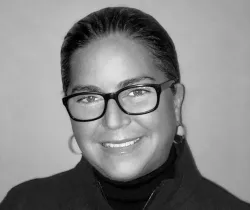Hellena O’Dell

Hellena O’Dell is the senior vice president of sponsorship engagement for Freeman, where she has spent more than 20 years leading global partner engagement and event strategy.

I’ve been in the brand experience business for more than 20 years. During that time, I’ve learned a thing or two about what makes a sponsorship work and why.
For most of our clients, it all comes down to budget. There’s a lot to accomplish and there never seems to be enough money. This is why sponsorships are so attractive – they provide an additional source of revenue to help offset costs and an additional activation to complement brand strategies. At the same time, that doesn’t mean we should just plop a sponsorship into an event and pat ourselves on the back.
When I went to work for Freeman, I knew that my main mission was to make sure sponsorships added as much value for the attendee as they do for the client. I also learned that the key to getting this balance right was simple: throw the rulebook out of the window.
Add a little star power
I worked on a show recently where we got a famous musician to do an intimate jam session for 25 of our top clients. Plot twist: it was in his hotel room. At the end, he handed out autographed guitars and our guests promptly went out and raved about the experience all over social media. You can’t buy that kind of word-of-mouth.
These types of activations continue the conversation outside of the event and keep the momentum going. That way, the event isn’t over in four days – it lives on. The trick here is leveraging the contract of the entertainer or thought leader and negotiating a few extras well in advance (e.g. a private concert, a Q&A, autographed swag). Show them ten options and that gives them plenty to say “no” to (because they’ll never say “no” to all ten).
Think outside the default setting
When it comes to events, who says people have to be stuck inside four walls to learn? Who says they have to be sitting or standing? They can be moving, touching, tasting, walking or playing. We get so caught up in what we want the hosting sessions and content to look like that we forget to ask ourselves what our guests might want.
We should be creating experiences that our attendees would be happy to do in their off time. Maybe they prefer to do their learning out in the sunshine or while they’re doing yoga, or at a scotch or tequila tasting (and honestly, who wouldn’t?). Instead of doing our keynote in an arena that holds 10,000 people, why not a ballpark or a zoo? That sort of thing resonates and engages, and most importantly, it sets us apart.
Customize for your customers
A lot of providers are content to buy a few lanyards, some notebooks and a custom set of napkins and call it a day. If you want to keep clients coming back, you have to get in their heads and figure out their strategy first. Then you turn the dial slightly based on their needs.
For example, a large tech client of mine was waffling about appearing at one of the bigger tech conferences. They were having trouble justifying the expense and the effort of setting up a booth there. I called them up and flat out asked them, “Why do a booth at all? Why not do something totally different?”
We ended up customizing a package based on their event strategy rather than some tiered package offering. Instead of 10-foot aisles, we did 40-foot walkways. Instead of booths, we did indoor grass strips. We sprinkled food and beverage throughout, created pavilions to inspire organic conversation and created multiple touchpoints for the attendees to interact with. Suddenly, they’re not just setting up a booth, they’re creating a brand experience.
Ultimately, sponsorships need to keep up
As an industry, we are evolving at breakneck speed. We are learning to question the legacy methods we’ve used for decades and look at creative new ways to engage attendees. If we don’t rethink how we design sponsorship campaigns and strategies, we’re going to start seeing lower spend and participation, and nobody wants that.
My mission is to contribute to this evolution in any way I can. I want my clients to question why they are putting sessions inside four walls at a conference center. I want them to rethink how they present content and whether it’s engaging (read: entertaining) enough. I want them to think about how to make it easier for an attendee to find themselves outside in the fresh air while they’re still within the parameters of our brand experience.
Let’s tear down the walls and do a bit of theater. Let’s encourage organic conversation. Let’s reconsider where leadership, education and networking can take place, and ask ourselves if it’s somewhere we’d like to be.
And while we’re at it, let’s have a little fun.

Add new comment